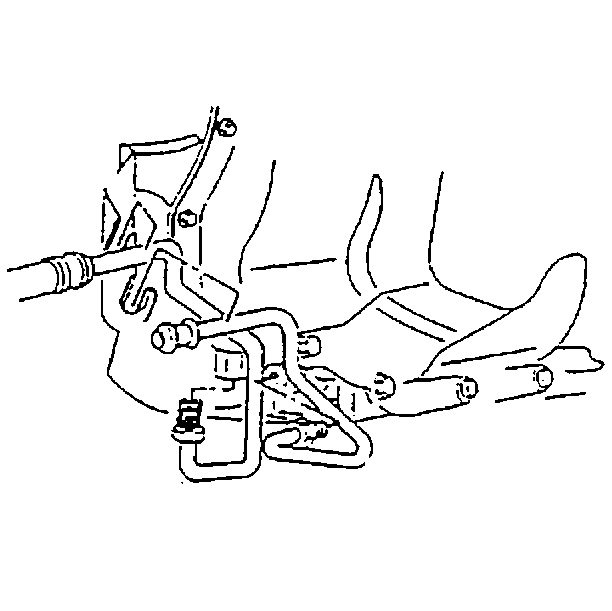Removal Procedure
If replacement of the transaxle oil cooler pipes is required, use only double-wrapped and brazed steel pipes which meet GM specification 123M, or an equivalent. The pipes should be double-flared.
- Raise and suitably support the vehicle. Refer to Vehicle Lifting Procedures in General Information.
- Remove the transaxle oil cooler hose clamps and the hose from the lines.
- Remove the bolt and bracket attaching the oil cooler pipes to the transaxle.
- Remove the fittings at the transaxle.
- Remove the fittings at the radiator.
Notice: Allow sufficient clearance around transmission oil cooler pipes in order to prevent damage or wear which may cause fluid loss.


Installation
- Install the fittings at the radiator.
- Install the fittings at the transaxle.
- Install the oil cooler pipes, the bracket and the bolts at the transaxle. Refer to Transmission Mount Replacement and Transmission Mount Replacement .
- Install the oil cooler hose and the clamps.
- Lower the vehicle.
- Adjust the fluid level.
- Inspect for the following:

Tighten
Tighten the fittings to 23 N·m (17 lb ft).
Notice: Use the correct fastener in the correct location. Replacement fasteners must be the correct part number for that application. Fasteners requiring replacement or fasteners requiring the use of thread locking compound or sealant are identified in the service procedure. Do not use paints, lubricants, or corrosion inhibitors on fasteners or fastener joint surfaces unless specified. These coatings affect fastener torque and joint clamping force and may damage the fastener. Use the correct tightening sequence and specifications when installing fasteners in order to avoid damage to parts and systems.

Tighten
Tighten the fittings to 23 N·m (17 lb ft).
Tighten
Tighten the clamps to 2 N·m (18 lb in).
| • | Proper completion of repairs |
| • | Proper fluid level. Refer to Transmission Fluid Check . |
| • | Fluid leaks. Refer to Fluid Leak Diagnosis and Repair . |
